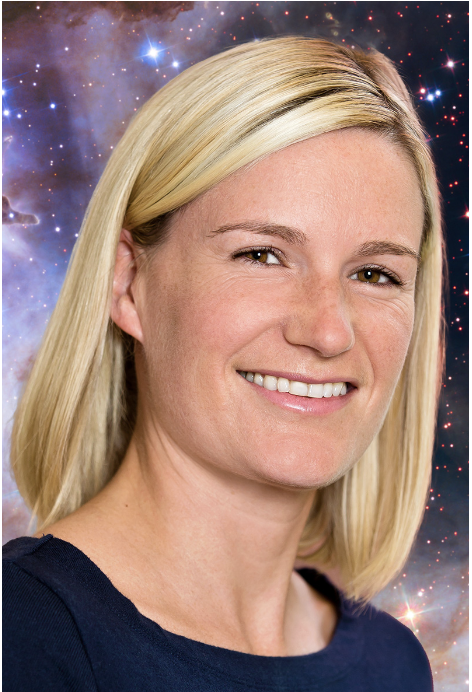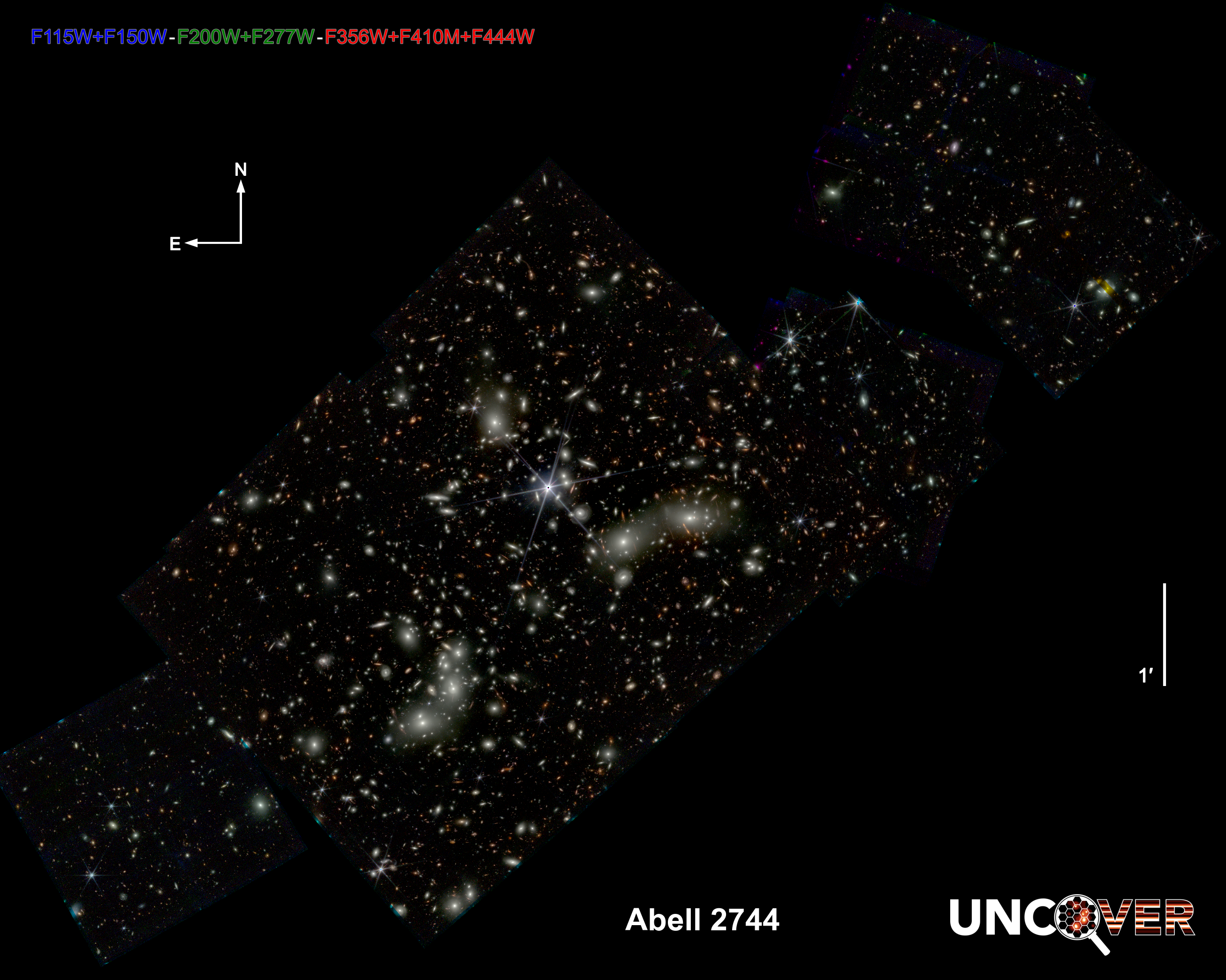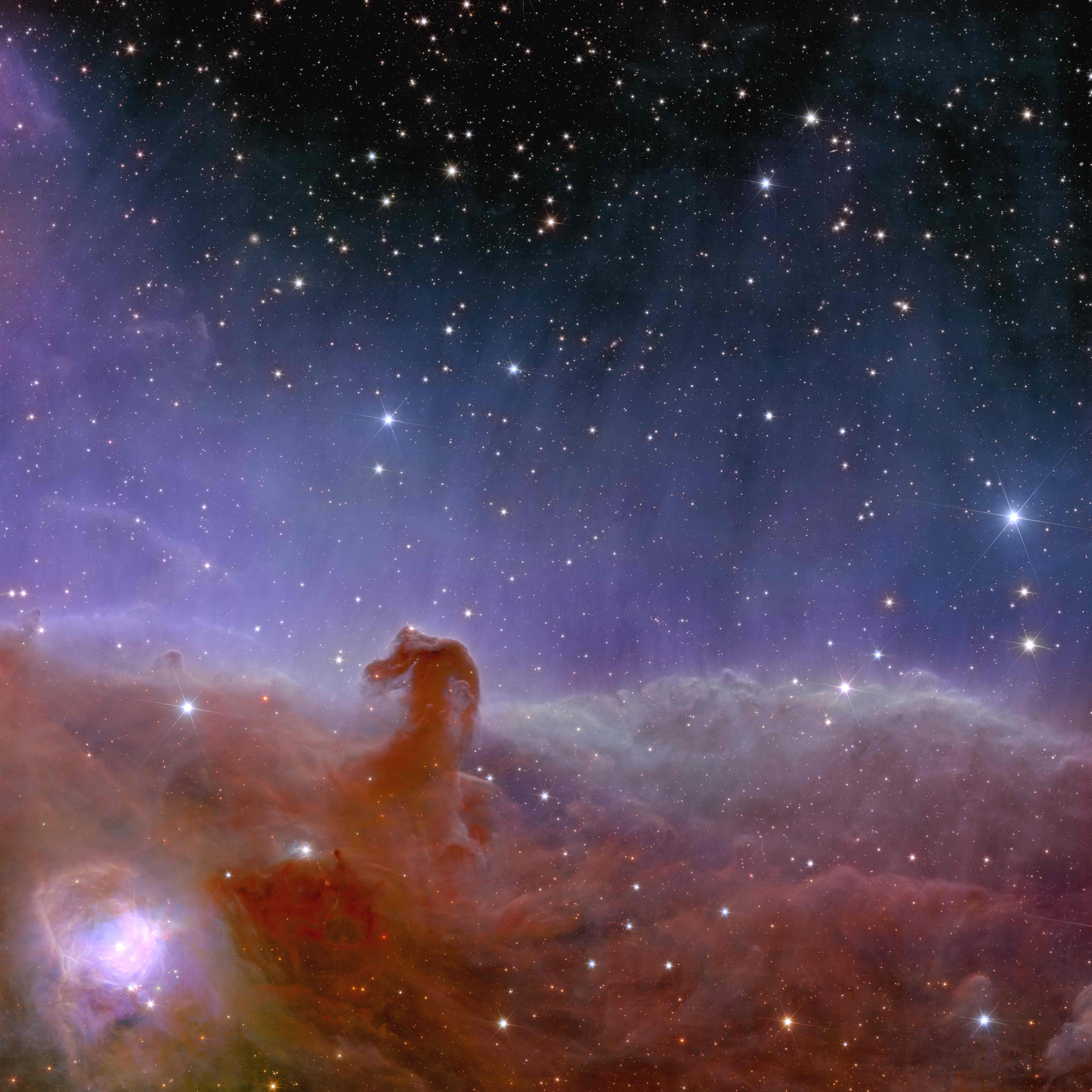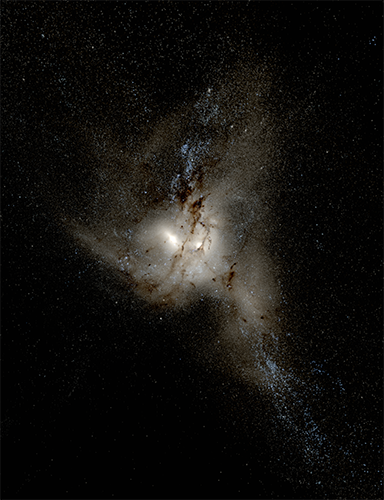Astrophysics Colloquium schedule
Wednesdays, 3:30-4:30 pm
The Astronomy Colloquia Meetings are held in the P&A building, room 1-434. Zoom information sent in email.
Spring 2024
April 10, 2024
Suvi Gezari (Space Telescope Science Institute)
Searching for the Tidal Disruption of Stars Across the Black Hole Mass Function over Cosmic Time
 Abstract: The tidal disruption of a star that wanders too close to a central black hole is a unique probe of quiescent supermassive black holes lurking in the nuclei of galaxies. Over the last 5 years, we have demonstrated the ability to discover and spectroscopically classify large samples of tidal disruption events (TDEs) in the optical from the Zwicky Transient Facility (ZTF) Northern Sky Survey, with systematic high-energy follow-up with Swift and XMM-Newton. One of the most exciting applications of TDEs is the ability to probe intermediate mass black holes (IMBHs) that are expected to reside in dwarf galaxies, with a black hole occupation fraction that depends on the nature of primordial seed black holes in the early Universe. One novel way to probe IMBHs is to catch them in the act of tidally disrupting and accreting a white dwarf. White dwarfs (WDs) are so dense, that they can only be ripped apart outside the event horizon around an IMBH sized black hole. Furthermore, there is a theoretical prediction for a radioactively powered thermonuclear explosion at the time of maximum compression of the star as it passes through pericenter, that could be strong enough to ignite thermonuclear runaway, and a peculiar Type Ia like explosion. I will present our strategy for searching for TDEs across the black hole mass function over cosmic time in the next 5 years, by extending our sensitivity to TDEs to lower central black hole masses and higher redshifts, by exploiting the discovery power of the next generation of time domain surveys, including Rubin, Roman, ULTRASAT, and UVEX.
Abstract: The tidal disruption of a star that wanders too close to a central black hole is a unique probe of quiescent supermassive black holes lurking in the nuclei of galaxies. Over the last 5 years, we have demonstrated the ability to discover and spectroscopically classify large samples of tidal disruption events (TDEs) in the optical from the Zwicky Transient Facility (ZTF) Northern Sky Survey, with systematic high-energy follow-up with Swift and XMM-Newton. One of the most exciting applications of TDEs is the ability to probe intermediate mass black holes (IMBHs) that are expected to reside in dwarf galaxies, with a black hole occupation fraction that depends on the nature of primordial seed black holes in the early Universe. One novel way to probe IMBHs is to catch them in the act of tidally disrupting and accreting a white dwarf. White dwarfs (WDs) are so dense, that they can only be ripped apart outside the event horizon around an IMBH sized black hole. Furthermore, there is a theoretical prediction for a radioactively powered thermonuclear explosion at the time of maximum compression of the star as it passes through pericenter, that could be strong enough to ignite thermonuclear runaway, and a peculiar Type Ia like explosion. I will present our strategy for searching for TDEs across the black hole mass function over cosmic time in the next 5 years, by extending our sensitivity to TDEs to lower central black hole masses and higher redshifts, by exploiting the discovery power of the next generation of time domain surveys, including Rubin, Roman, ULTRASAT, and UVEX.
April 17, 2024
Kate Whitaker (University of Massachusetts)
Unveiling the Epoch of Quenching

 Abstract: When the Universe was merely a few billion years old, about half of massive galaxies had already formed the bulk of their stars and
new star formation plummeted. New observations from the James Webb
Space Telescope are now pushing the existence of these ‘red and dead’
(quiescent) galaxies to uncomfortably high redshifts. How these massive
galaxies form so rapidly and quench at such early times remains a
puzzle. Their dark matter halos should contain large gas reservoirs
that should cool efficiently, sustaining star formation over long
periods. In this talk, I will review the recent innovative techniques
developed to probe the physical properties of early quiescent galaxies,
and the key observations constraining their formation histories. I will
present promising paths forward towards solving this puzzle that
leverage strong gravitational lensing and the capabilities of the James
Webb Space Telescope and ALMA.
Abstract: When the Universe was merely a few billion years old, about half of massive galaxies had already formed the bulk of their stars and
new star formation plummeted. New observations from the James Webb
Space Telescope are now pushing the existence of these ‘red and dead’
(quiescent) galaxies to uncomfortably high redshifts. How these massive
galaxies form so rapidly and quench at such early times remains a
puzzle. Their dark matter halos should contain large gas reservoirs
that should cool efficiently, sustaining star formation over long
periods. In this talk, I will review the recent innovative techniques
developed to probe the physical properties of early quiescent galaxies,
and the key observations constraining their formation histories. I will
present promising paths forward towards solving this puzzle that
leverage strong gravitational lensing and the capabilities of the James
Webb Space Telescope and ALMA.
April 24, 2024
Itai Linial (Columbia University)
Stellar Destruction near Massive Black Holes and Quasi-Periodic Eruptions
 Abstract: Centers of galaxies are fertile environments for a variety of dynamical processes, owing to the high density of stars and the presence of a central Super-massive Black Hole (SMBH). I will introduce two main channels of stellar destruction caused by interaction with the central SMBH: Stars may be deflected onto a nearly radial trajectory where they are ripped apart by the SMBH’s tidal field, producing a luminous flare powered by the rapid fallback of stellar debris (known as Tidal Disruption Event, TDE), or alternatively, they may inspiral towards the SMBH on a nearly circular orbit until they begin to gradually shed their mass over many orbits (Extreme Mass Ratio Inspiral, EMRI). I will discuss the possible connection between these phenomena and a newly discovered class of repeating X-ray flares occurring in galactic nuclei, known as Quasi-Periodic Eruptions (QPEs). I will present a theoretical model for explaining the observations, involving a stellar EMRI interacting with the accretion flow produced by a recent TDE in the same galactic center. I will conclude by discussing the potential of QPEs and other repeating transients in galactic nuclei in testing our theoretical understanding of SMBHs and their environments - including measurements of their masses and spins, probing the nature of the accretion flow that forms around them, and constraining the dynamical processes that govern their engulfing stellar clusters.
Abstract: Centers of galaxies are fertile environments for a variety of dynamical processes, owing to the high density of stars and the presence of a central Super-massive Black Hole (SMBH). I will introduce two main channels of stellar destruction caused by interaction with the central SMBH: Stars may be deflected onto a nearly radial trajectory where they are ripped apart by the SMBH’s tidal field, producing a luminous flare powered by the rapid fallback of stellar debris (known as Tidal Disruption Event, TDE), or alternatively, they may inspiral towards the SMBH on a nearly circular orbit until they begin to gradually shed their mass over many orbits (Extreme Mass Ratio Inspiral, EMRI). I will discuss the possible connection between these phenomena and a newly discovered class of repeating X-ray flares occurring in galactic nuclei, known as Quasi-Periodic Eruptions (QPEs). I will present a theoretical model for explaining the observations, involving a stellar EMRI interacting with the accretion flow produced by a recent TDE in the same galactic center. I will conclude by discussing the potential of QPEs and other repeating transients in galactic nuclei in testing our theoretical understanding of SMBHs and their environments - including measurements of their masses and spins, probing the nature of the accretion flow that forms around them, and constraining the dynamical processes that govern their engulfing stellar clusters.
May 1, 2024
Erin Kara (Massachusetts Institute of Technology)
May 8, 2024
Jason Rhodes (JPL Nasa)
Mapping the Dark Universe with Euclid

 Abstract: After 2 decades of preparation, the European Space Agency’s Euclid space telescope was launched on July 1, 2023. Euclid’s primary goal is to study the dark universe and help us better understand the enigmatic dark matter and dark energy that make up the bulk of the universe. I will talk about my personal journey in bringing Euclid to fruition, give the details of the Euclid telescope and instruments that make it so powerful as a dark energy probe, and talk about the science (cosmology and other) that will be enabled by Euclid’s deep (50 square degrees) and wide (15,000 square degrees) sky surveys.
Abstract: After 2 decades of preparation, the European Space Agency’s Euclid space telescope was launched on July 1, 2023. Euclid’s primary goal is to study the dark universe and help us better understand the enigmatic dark matter and dark energy that make up the bulk of the universe. I will talk about my personal journey in bringing Euclid to fruition, give the details of the Euclid telescope and instruments that make it so powerful as a dark energy probe, and talk about the science (cosmology and other) that will be enabled by Euclid’s deep (50 square degrees) and wide (15,000 square degrees) sky surveys.
May 15, 2024
TBD
May 22, 2024
Brant Robertson
May 29, 2024
Chris Hayward (Flatiron Institute, New York)
Bursty star formation: physical drivers and implications for JWST observations of high-redshift galaxies

 Abstract: A complete theory of galaxy formation requires understanding the details of how gas is converted into stars over cosmic time, which is affected by gas supply, star formation, and feedback-driven outflows. I will present a physical picture for galaxy formation that exhibits two distinct phases: at high redshift, stellar feedback causes all star-forming galaxies to undergo rapid fluctuations in their star formation rates on ~10-Myr timescales. Bursts of star formation are followed by strong outflows, which cause the star formation rate to drop precipitously. Fresh gas supply from galactic fountains rejuvenates star formation and restarts the cycle. At z ~ 1, simulations of massive galaxies exhibit a qualitative transition: outflows are no longer driven effectively, and the galaxies transition to steadily star-forming, well-order disk galaxies. I will discuss the physical causes of bursty star formation and the aforementioned transition to time-steady star formation, in addition to some implications for JWST observations of high-redshift galaxies.
Abstract: A complete theory of galaxy formation requires understanding the details of how gas is converted into stars over cosmic time, which is affected by gas supply, star formation, and feedback-driven outflows. I will present a physical picture for galaxy formation that exhibits two distinct phases: at high redshift, stellar feedback causes all star-forming galaxies to undergo rapid fluctuations in their star formation rates on ~10-Myr timescales. Bursts of star formation are followed by strong outflows, which cause the star formation rate to drop precipitously. Fresh gas supply from galactic fountains rejuvenates star formation and restarts the cycle. At z ~ 1, simulations of massive galaxies exhibit a qualitative transition: outflows are no longer driven effectively, and the galaxies transition to steadily star-forming, well-order disk galaxies. I will discuss the physical causes of bursty star formation and the aforementioned transition to time-steady star formation, in addition to some implications for JWST observations of high-redshift galaxies.
June 5, 2024
Zoltan Haiman (Columbia University)
Gravitational wave and electromagnetic signatures of binary black holes with circumbinary gas
 Abstract: Binary black holes (BHBs) embedded in dense gas hold the promise of so-called "multi-messenger astrophysics": when they are detected both through gravitational waves (GWs) and electromagnetic
(EM) observations, they will enable novel science. This is true both
for massive BHBs, whose GWs will be detectable by the future LISA
satellite and by on-going pulsar timing arrays (PTAs), as well as for
stellar-mass BHBs detected through ground-based GW detectors. In both
cases, identifying the coalescing binaries through their EM signatures
will help clarify their astrophysical origin and yield novel probes of
cosmology, fundamental physics, and accretion physics. In this talk,
I will describe how circumbinary gas may produce characteristic EM
signatures for both massive and stellar-mass BHBs, based on analytic
models as well as hydrodynamical simulations. I will also argue that
in both cases, some coalescing binaries may have already been detected
in optical surveys, providing clues about their origin.
Abstract: Binary black holes (BHBs) embedded in dense gas hold the promise of so-called "multi-messenger astrophysics": when they are detected both through gravitational waves (GWs) and electromagnetic
(EM) observations, they will enable novel science. This is true both
for massive BHBs, whose GWs will be detectable by the future LISA
satellite and by on-going pulsar timing arrays (PTAs), as well as for
stellar-mass BHBs detected through ground-based GW detectors. In both
cases, identifying the coalescing binaries through their EM signatures
will help clarify their astrophysical origin and yield novel probes of
cosmology, fundamental physics, and accretion physics. In this talk,
I will describe how circumbinary gas may produce characteristic EM
signatures for both massive and stellar-mass BHBs, based on analytic
models as well as hydrodynamical simulations. I will also argue that
in both cases, some coalescing binaries may have already been detected
in optical surveys, providing clues about their origin.